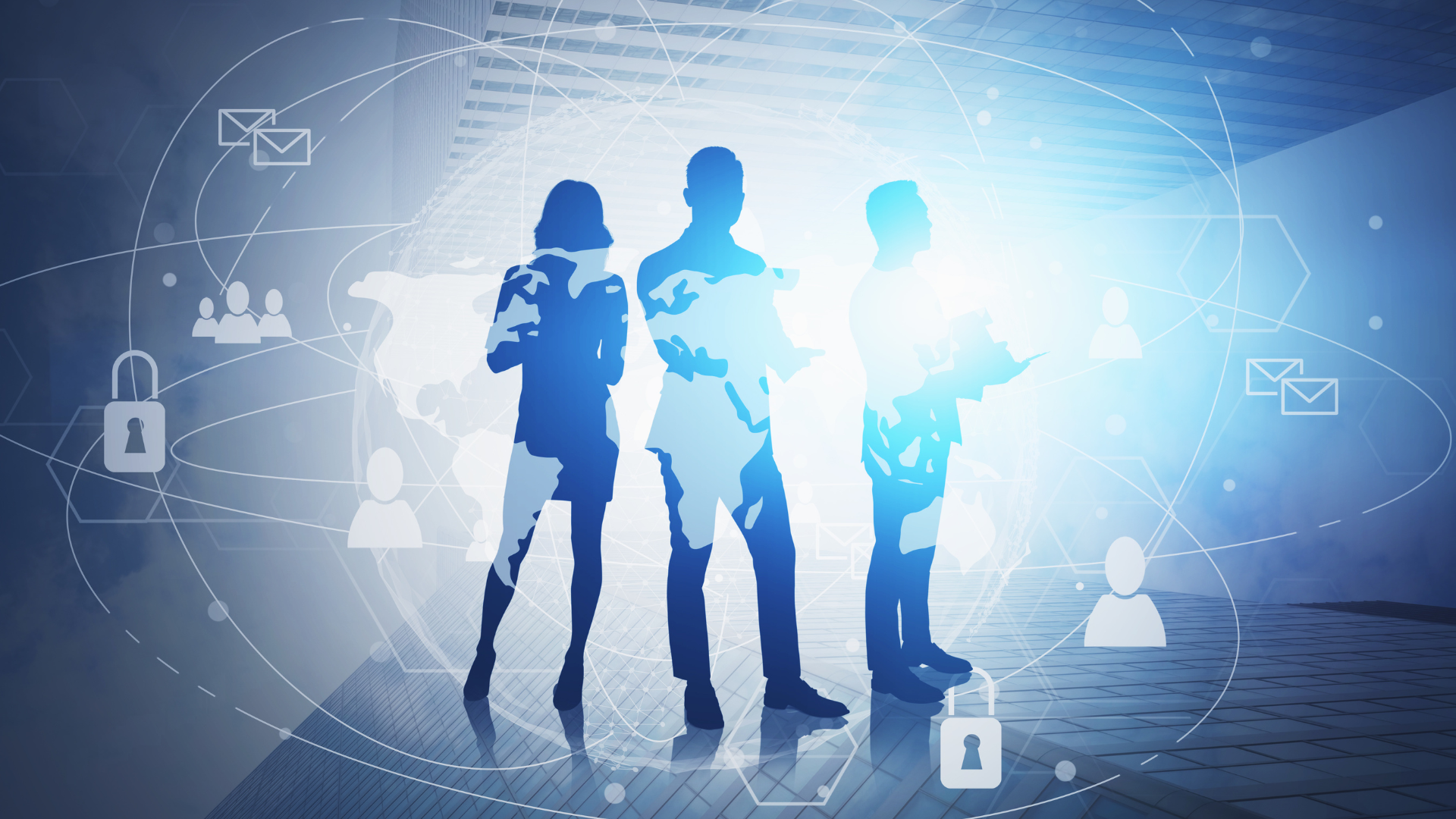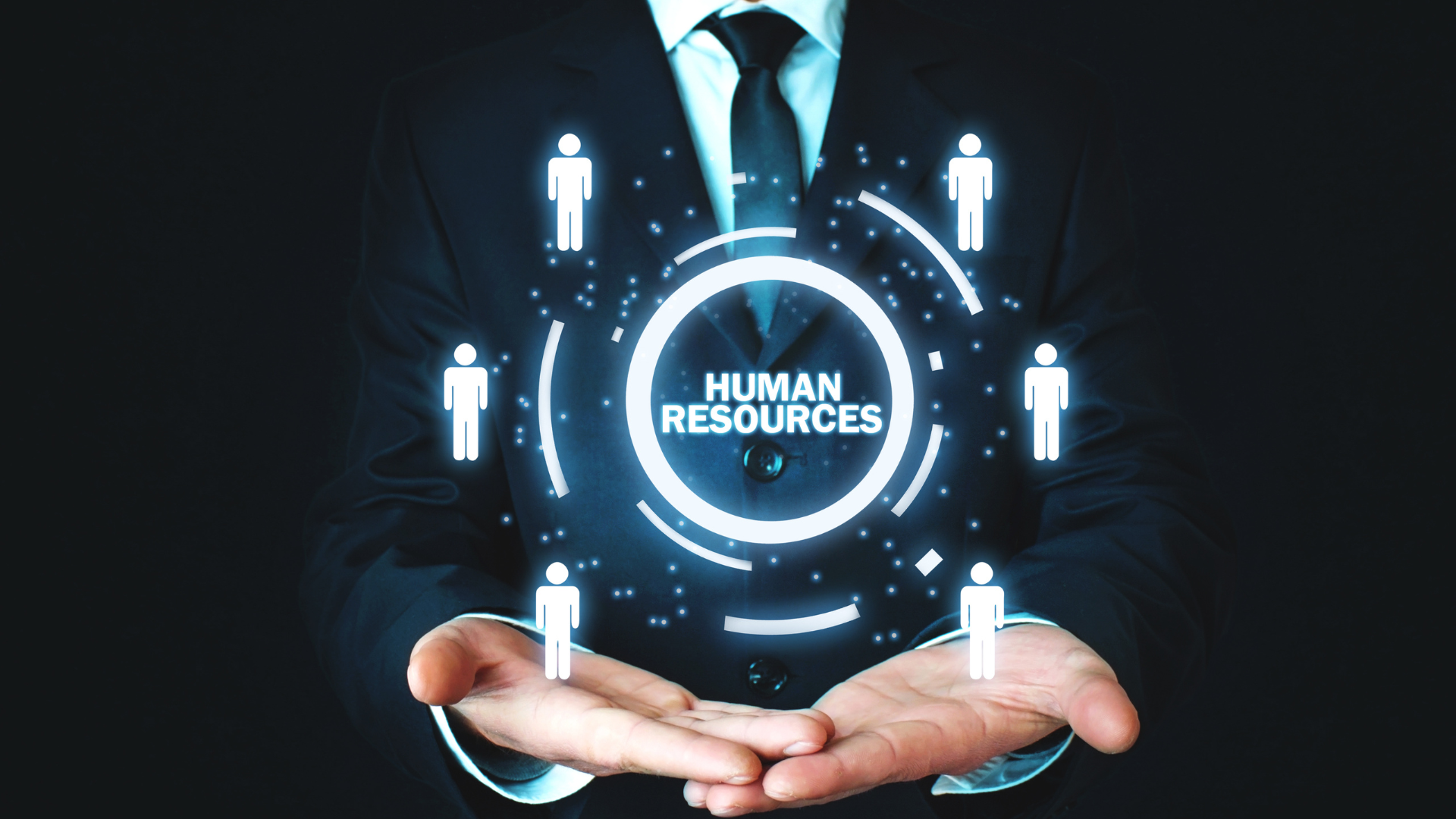Tag: employee engagement
-

What’s New in HR Automation and How It Benefits You Immediately
What’s New in HR Automation—and How It Benefits You ImmediatelyHR automation has evolved more in the past three years than in the previous three decades. What was once a department driven by paperwork, spreadsheets, and endless manual workflows is now becoming fully intelligent, predictive, and deeply connected to business growth. Today’s HR automation isn’t just about speed—it’s about accuracy, strategy, and giving HR leaders the ability to make smarter decisions faster. With platforms like NINJA HR leading the shift, organizations of all sizes are discovering immediate, measurable benefits from new HR technologies. In this 3000-word deep dive, we explore what’s changed, what’s new, and why it matters for every HR team aiming to work smarter—not harder.The New Era of HR AutomationHR automation used to be simple: converting manual tasks into digital checklists. Today, it’s a powerhouse of interconnected systems that use artificial intelligence, machine learning, and behavioral analytics to eliminate repetitive work and guide strategic HR decisions. Modern automation goes beyond task completion and becomes a partner in HR operations. It understands employee behavior, predicts trends, assists with compliance, improves accuracy, and connects every corner of the HR lifecycle. HR automation today is built on three pillars: intelligence, integration, and insight.AI-Powered Decision SupportOne of the biggest advancements in HR automation is AI-driven decision support. Instead of relying on manual analysis or fragmented data, modern HRMS platforms use AI to interpret employee patterns, identify early warning signals, and predict potential outcomes. NINJA HR’s AI engine, for example, analyzes attendance, engagement, and performance data to guide better decisions. It helps HR leaders spot risks like disengagement or turnover before they escalate, allowing proactive intervention.Automated Recruitment IntelligenceRecruitment automation has become smarter, faster, and more accurate. Resume scanning is no longer just keyword-based—instead, AI evaluates skill relevance, experience alignment, and cultural fit. NINJA HR’s recruitment automation ranks candidates, predicts their performance potential, and accelerates screening processes. Automated interview scheduling, chatbot-assisted candidate communication, and instant shortlisting reduce hiring time dramatically.Advanced Employee Self-Service ToolsToday’s employees expect seamless digital experiences. Modern HR automation includes advanced self-service portals powered by AI. Whether it’s applying for leave, checking PTO balances, updating documents, requesting letters, or viewing payslips, everything is instant and automated. NINJA HR offers responsive self-service dashboards that reduce workload for HR teams while boosting employee satisfaction. It helps employees manage their workflow efficiently without relying on HR intervention for routine queries.Next-Level Attendance and Time TrackingForget punch cards and manual attendance logs. HR automation now integrates biometric devices, GPS tracking for field teams, geofencing, facial recognition, and automated compliance alerts. NINJA HR syncs attendance in real time and ensures accurate shift tracking, overtime calculation, and leave synchronization. This eliminates payroll discrepancies and reduces time theft.Automated Learning and Development ProgramsTraining has become personalized thanks to AI. Modern HR automation analyzes employee skills, performance data, and future role requirements to create tailored learning paths. NINJA HR recommends courses, tracks completion, and provides learning analytics so companies can measure training impact. Automated reminders, mobile-friendly learning modules, and seamless LMS integration keep development ongoing and structured.Smarter Payroll and Compliance AutomationPayroll mistakes are one of the biggest pain points in HR. New HR automation tools calculate salary adjustments, track attendance, apply tax updates, manage reimbursements, and generate payslips automatically. NINJA HR uses compliance automation to stay updated on regional labor laws and policies to reduce manual errors. Built-in validation checks ensure every payroll cycle runs smoothly and accurately.Real-Time Analytics for Better HR LeadershipModern HR automation delivers real-time dashboards that present data in digestible visual formats. Whether it’s workforce analytics, performance trends, turnover patterns, or engagement insights, HR leaders get instant visibility. NINJA HR offers customizable dashboards that allow leaders to filter metrics by team, department, location, or role. With predictive analytics, HR can plan proactively rather than reactively.Workflow Automation That Reduces ChaosAutomation is no longer about isolated tasks—it’s about end-to-end workflows. NINJA HR automates processes like onboarding, offboarding, policy updates, asset allocation, probation evaluation, and leave approvals. Workflows trigger automatically based on specific actions or events. This eliminates missed steps, reduces HR workload, and ensures consistent employee experience.Modern Onboarding and Offboarding AutomationOnboarding is one of the most critical HR responsibilities. Modern automation offers digital forms, automated document collection, onboarding checklists, e-signatures, and scheduled training sessions. NINJA HR ensures every new hire is guided through a seamless onboarding journey. Similarly, offboarding automation prevents compliance gaps, ensures proper documentation, and protects organizational data.Chatbots and Virtual HR AssistantsAI chatbots allow employees to get instant answers to HR questions like policies, PTO, payroll status, and more. NINJA HR’s AI chat assistant reduces HR’s workload by answering repetitive questions 24/7. It improves accessibility, reduces resolution time, and enhances employee engagement.Immediate Benefits of Modern HR AutomationThe best part about today’s HR automation? The benefits begin immediately. Unlike older systems that required long learning curves, NINJA HR offers user-friendly interfaces and intuitive controls designed for HR teams of all sizes. Organizations see fast improvements in accuracy, time savings, engagement, and decision quality.Instant Time SavingsHR teams reclaim hours each week by eliminating repetitive tasks. Automated workflows streamline approvals, minimize follow-ups, and ensure tasks are completed without manual effort. Recruiters no longer sift through hundreds of resumes, managers don’t chase timesheets, and payroll teams avoid hours of reconciliation work.Cost Reductions from Day OneAutomation reduces hiring costs, payroll errors, compliance penalties, and administrative overhead. By centralizing HR processes, organizations reduce dependency on multiple software tools and subscriptions. Predictive turnover analytics minimize replacement costs by identifying at-risk employees early.Better HR Accuracy and ComplianceMistakes are expensive—and HR automation eliminates most of them. Automated attendance tracking, payroll calculations, and compliance alerts ensure HR stays accurate and audit-ready. Real-time validation checks help avoid errors that could result in penalties or disputes.Improved Employee ExperienceModern HR automation gives employees control over their experience. Easy access to documents, clear visibility into their data, and instant responses through chatbots create a more empowered workforce. Engaged employees are more productive, loyal, and aligned with company goals.Increased HR ProductivityWith repetitive tasks automated, HR professionals finally have time for what truly matters: culture building, engagement strategies, talent development, and leadership. Automation shifts HR from administrative work to strategic influence.Smarter Decision-MakingData becomes a superpower for HR teams using NINJA HR. Real-time analytics reveal issues early, predict future challenges, and offer actionable insights. Leaders make faster, more accurate, and more strategic decisions—backed by data, not guesswork.Future-Proofing HRModern HR automation evolves continuously. AI learns as the organization grows, making recommendations more accurate over time. With hybrid work models on the rise, automation ensures HR operations remain seamless, scalable, and adaptive.ConclusionHR automation has entered a revolutionary stage where intelligence, predictive analytics, and seamless workflows redefine how HR teams operate. What’s new in HR automation today is not just better technology—it’s a fundamentally better way of working. Platforms like NINJA HR empower HR leaders to automate tasks, improve compliance, elevate employee experience, and drive strategic growth. And the best part? The benefits start immediately. From faster processes to better decision-making, HR automation is no longer a future luxury—it is a present necessity that transforms HR from a reactive function into a proactive, data-driven powerhouse. -

5 Ways AI in HRMS Saves Time, Money, and Sanity
5 Ways AI in HRMS Saves Time, Money, and SanityThe modern HR department is no stranger to chaos — endless paperwork, manual processes, delayed approvals, and compliance confusion. As companies scale, these inefficiencies multiply. The solution? Artificial Intelligence integrated into Human Resource Management Systems (HRMS). AI-powered HRMS platforms like NINJA HR are transforming how businesses handle hiring, payroll, employee engagement, and compliance. They don’t just automate tasks — they make decisions smarter, faster, and more human. In this article, we’ll explore five ways AI-driven HRMS saves time, money, and sanity for HR professionals and growing organizations alike.The Real Problem with Traditional HRBefore diving into solutions, let’s talk about the old-school approach. Traditional HR management relies heavily on spreadsheets, emails, and disconnected systems. Managers spend hours juggling recruitment data, attendance logs, and compliance forms. These outdated methods lead to human errors, miscommunication, and poor decision-making. Worse, they consume valuable time that could be used for strategy and employee engagement. Simply put, manual HR processes drain productivity and morale. Enter AI — the ultimate efficiency booster for HRMS.1. Automating Routine Tasks to Save TimeRepetitive HR tasks like attendance tracking, leave approvals, payroll updates, and onboarding paperwork can consume more than half of an HR team’s day. AI in HRMS takes these manual processes off your plate. With automation, NINJA HR handles time-off requests, generates payslips, and updates employee records without human intervention. Smart chatbots answer employee questions instantly, while digital workflows route approvals automatically. The result? HR professionals regain countless hours every week to focus on people, not paperwork.2. Smarter Recruitment that Cuts Hiring CostsRecruitment is one of the most expensive HR functions. Traditional hiring often means sorting through hundreds of resumes manually and conducting multiple interview rounds — costing both time and money. AI-driven HRMS tools streamline this entire process. NINJA HR uses machine learning algorithms to screen resumes, score candidates, and match them to job requirements. It also predicts cultural fit based on behavioral data, ensuring better long-term hires. By automating sourcing and screening, businesses reduce recruitment costs by up to 50% while cutting time-to-hire dramatically.3. Reducing Payroll and Compliance ErrorsPayroll mistakes are costly — both financially and legally. Manual data entry errors or missed tax updates can lead to fines and frustrated employees. AI in HRMS ensures every payroll cycle is accurate, compliant, and automated. NINJA HR’s AI engine tracks labor laws, updates statutory requirements, and validates calculations in real time. It detects anomalies, flags discrepancies, and ensures every paycheck aligns with policies. This not only saves money but also safeguards the company’s reputation. HR leaders can finally relax knowing compliance runs on autopilot.4. Predictive Analytics for Smarter Decision-MakingAI isn’t just about automation — it’s about intelligence. Predictive analytics in HRMS like NINJA HR help organizations make proactive decisions. The system analyzes attendance trends, engagement data, and turnover rates to identify early warning signs. It can forecast hiring needs, detect burnout risks, and even suggest training opportunities for skill gaps. Instead of reacting to problems, HR leaders act with foresight. This intelligence-driven approach not only improves retention but also ensures the company scales sustainably and strategically.5. Enhancing Employee Experience and EngagementA satisfied workforce is the backbone of a thriving business. Yet, employees often feel disconnected due to poor communication and outdated systems. AI-driven HRMS changes that. NINJA HR uses sentiment analysis and pulse surveys to understand employee morale in real-time. Personalized dashboards show career progress, performance goals, and training suggestions. Chatbots handle HR queries 24/7, reducing frustration. This blend of automation and personalization creates a smooth, empowering experience for employees — improving engagement, loyalty, and overall happiness.Bonus: Saving Sanity with SimplicityTime and money are tangible benefits, but the sanity HR professionals regain is priceless. Instead of drowning in paperwork or chasing approvals, they finally have breathing room to focus on meaningful work — culture-building, innovation, and strategy. NINJA HR’s AI-powered dashboards simplify complex data into clear visuals. No more juggling spreadsheets or worrying about missed deadlines. It’s HR Zen — powered by artificial intelligence.The Financial Impact of AI in HRMSLet’s put it into perspective. Businesses using AI-driven HR systems report up to a 40% reduction in administrative costs and a 25% improvement in productivity. Every automated workflow saves hours, every error prevented saves money, and every engaged employee adds long-term value. For growing companies, this translates into faster scalability and stronger profit margins. NINJA HR doesn’t just streamline processes — it drives measurable financial impact by aligning technology with strategic growth.Real-World Example: How One Company Transformed with AI HRMSConsider a mid-sized IT firm that switched from spreadsheets to NINJA HR. Before automation, their HR team spent 60% of their time managing attendance and payroll queries. Within months of adopting AI automation, administrative tasks dropped by half. Recruitment turnaround time improved from three weeks to five days, and employee satisfaction scores rose by 30%. This transformation wasn’t just operational — it was cultural. By removing bottlenecks, HR could focus on talent development and innovation instead of daily chaos.Why NINJA HR Leads the PackNot all HRMS platforms are created equal. NINJA HR’s advantage lies in its balance of automation, intelligence, and usability. It integrates seamlessly with existing tools, supports multi-level workflows, and scales effortlessly as your business grows. With its intuitive interface and AI engine, it’s built to evolve alongside your organization. From startups to enterprises, NINJA HR adapts to every business size and need — ensuring your HR strategy stays one step ahead.The Future of HRMS Is AI-PoweredAI in HRMS isn’t a luxury anymore — it’s a necessity for companies that want to stay competitive. As organizations embrace hybrid work models and global teams, manual HR systems simply can’t keep up. The future belongs to intelligent platforms that automate, analyze, and adapt. With NINJA HR, HR departments move from being reactive administrators to proactive strategists — leading with insights, not paperwork.ConclusionThe HR world is changing fast. What used to take days can now be done in minutes — thanks to AI-driven HRMS like NINJA HR. By automating routine work, enhancing decision-making, ensuring compliance, and improving employee engagement, AI gives HR leaders back what they need most: time, focus, and peace of mind. In short, it saves time, money, and sanity. The companies that adopt AI now won’t just keep up with change — they’ll lead it. And HR professionals using NINJA HR will finally have the freedom to focus on what truly matters — people. -

HRMS vs HRIS vs HCM: What’s the Difference (and Which One Do You Need)?
HRMS vs HRIS vs HCM: What’s the Difference (and Which One Do You Need)?If you’ve spent any time researching HR software, you’ve probably seen the terms HRMS, HRIS, and HCM used interchangeably. It’s confusing—because while these acronyms share similarities, they’re not identical. Each system serves a slightly different purpose within human resources management. And understanding those differences can help you choose the right solution for your organization. In today’s digital HR landscape, selecting the right tool isn’t just about features—it’s about empowering strategy, compliance, and people experience. Let’s unpack the differences between HRMS, HRIS, and HCM and discover why NINJA HR brings the best of all three into one smart platform.What Is an HRIS?HRIS stands for Human Resource Information System. It’s the foundation of digital HR management—focused mainly on storing employee information and automating administrative processes. Think of it as a digital filing cabinet with a brain. HRIS systems typically manage:
Employee records: Names, positions, start dates, compensation.
Payroll processing: Calculations, deductions, and tax compliance.
Benefits management: Health plans, retirement, insurance tracking.
Time and attendance: Clock-ins, PTO balances, schedules.
The goal of HRIS is accuracy and efficiency in data management. It replaces paper files and manual spreadsheets, ensuring compliance and better reporting.What Is an HCM?HCM stands for Human Capital Management. It’s a broader concept that goes beyond data tracking. HCM solutions manage the entire employee lifecycle—from recruitment and onboarding to development and retention. While HRIS focuses on “information,” HCM focuses on “capital”—your people as valuable assets. HCM typically includes:
Talent acquisition: Recruiting, applicant tracking, and onboarding.
Performance management: Reviews, feedback, and goal tracking.
Learning and development: Training, upskilling, and succession planning.
Analytics and workforce planning: Strategic insights for growth and retention.
HCM software aims to align human potential with organizational goals. It’s the strategic layer of HR.What Is an HRMS?HRMS, or Human Resource Management System, is often seen as the middle ground between HRIS and HCM. It builds on HRIS’s administrative capabilities but adds functionality like performance tracking, recruiting, and employee engagement. In essence, HRMS = HRIS + some elements of HCM. HRMS systems typically offer:
Core HR operations: Payroll, attendance, compliance.
Talent management: Hiring, onboarding, and evaluations.
Employee self-service: Portals for personal info and requests.
Analytics dashboards: Visual insights for better decisions.
The HRMS bridges the gap between transactional HR tasks and strategic people management.HRIS vs HRMS vs HCM: The Key DifferencesHere’s a simplified way to view it:
HRIS: Data-focused. Stores and processes employee information.
HRMS: Management-focused. Adds automation and performance tools.
HCM: Strategy-focused. Aligns people development with business growth.
Think of them as stages of HR technology maturity. The right choice depends on your company’s needs, size, and strategic goals.Which System Does Your Business Need?If your HR team spends most of its time managing data, payroll, and compliance, a robust HRIS might suffice. But if you want to manage performance, engagement, and employee growth, HRMS or HCM solutions are more appropriate.
Small businesses: Benefit from an HRIS or lightweight HRMS for automation and accuracy.
Mid-sized organizations: Need an HRMS that streamlines operations and introduces analytics.
Large enterprises: Gain the most from HCM tools that integrate workforce strategy with data-driven planning.
Ultimately, the future of HR lies in platforms that combine all three capabilities—like NINJA HR.Why NINJA HR Combines the Best of All WorldsNINJA HR doesn’t force you to choose between HRIS, HRMS, or HCM—it merges them. It provides all the core HR data management of an HRIS, the automation and workflow power of an HRMS, and the analytics and talent strategy focus of an HCM. That’s why modern HR teams are adopting it as their all-in-one HR command center.NINJA HR as an HRISWith secure cloud storage, automated data syncing, and compliance alerts, NINJA HR ensures every record is accurate, up-to-date, and audit-ready. It handles payroll, attendance, and reporting effortlessly—eliminating manual errors forever.NINJA HR as an HRMSRecruitment, onboarding, and performance management are fully automated within NINJA HR. It centralizes communication between HR, managers, and employees—making collaboration smoother and faster. The self-service portal empowers employees to manage their data, reducing HR’s administrative load.NINJA HR as an HCMThe platform doesn’t stop at automation—it transforms HR into a strategic force. With advanced analytics, predictive insights, and engagement tools, NINJA HR helps HR leaders forecast turnover, design growth programs, and optimize workforce planning for long-term success.Benefits of Choosing a Unified PlatformWhen all your HR functions live under one roof, you eliminate data silos, improve accuracy, and gain visibility into your workforce. NINJA HR’s unified approach leads to:
Faster decisions: Real-time analytics reveal workforce trends instantly.
Improved engagement: Employees have transparent access to data and feedback tools.
Cost efficiency: One system instead of three separate tools.
Scalability: Add new modules as your organization grows.
Security: Enterprise-grade encryption and compliance monitoring keep data safe.The Future of HR Tech Is IntegrationThe era of standalone HR tools is over. As workforces evolve, organizations need systems that are agile, scalable, and deeply connected. HR leaders no longer have time for juggling multiple vendors, logins, or data imports. The power lies in integration—and NINJA HR is built for exactly that. It’s not about labeling software as HRIS, HRMS, or HCM anymore—it’s about providing an ecosystem that supports the entire employee experience.ConclusionSo, HRIS vs HRMS vs HCM—which one do you need? The answer depends on where your organization is today and where you want to go. But if you’re ready for an all-in-one platform that blends compliance, automation, analytics, and strategy—then you’re ready for NINJA HR. It’s time to stop comparing systems and start transforming HR. Because with the right technology, HR stops being administrative and becomes transformative. -

Every Click Counts: Measuring ROI in Recruitment with NINJA HR
Every Click Counts: Measuring ROI in Recruitment with NINJA HRRecruitment has always been a critical function for organizations. Attracting, hiring, and retaining top talent directly impacts a company’s growth and success. But as talent markets become more competitive and hiring costs rise, HR teams are under increasing pressure to demonstrate the return on investment (ROI) of their recruitment efforts. Traditional methods often fail to provide clear insights into where time and money are being spent—and whether those investments are paying off. Enter NINJA HR, a tech-driven solution designed to give HR professionals the tools they need to measure, optimize, and maximize recruitment ROI. Let’s explore why measuring recruitment ROI matters and how NINJA HR makes every click count.Why Measuring Recruitment ROI MattersRecruitment is often seen as a cost center rather than a value driver. Without clear metrics, HR leaders struggle to justify budget allocations or optimize their strategies. Measuring ROI helps answer crucial questions like:
Where are our best hires coming from?
How much does it cost to fill a role?
Are we getting quality candidates from paid channels?
What is the long-term value of our hiring decisions?
By tracking ROI, companies can refine their hiring strategies, allocate resources effectively, and build stronger, more engaged teams.The Challenges of Tracking Recruitment ROIFor many HR teams, measuring ROI is easier said than done. Challenges include:
Fragmented Data: Metrics are spread across job boards, applicant tracking systems, and spreadsheets.
Lack of Real-Time Insights: Static reports fail to capture trends as they happen.
No Standard Metrics: Without consistent benchmarks, it’s hard to compare channels or campaigns.
This is where NINJA HR shines, consolidating data and automating ROI tracking.How NINJA HR Measures Recruitment ROININJA HR provides a comprehensive set of tools to calculate and improve ROI across the recruitment funnel:1. Source TrackingWith NINJA HR, you can see which job boards, social channels, and referral programs deliver the highest quality candidates. Detailed analytics track each applicant’s journey, from the first click to onboarding, helping you invest in the sources that work.2. Cost-per-Hire AnalysisNINJA HR calculates your cost per hire by factoring in ad spend, recruiter hours, and other expenses. Real-time dashboards help you identify expensive bottlenecks and optimize workflows to reduce costs without sacrificing quality.3. Time-to-Fill MetricsDelays in hiring can lead to lost productivity and missed opportunities. NINJA HR tracks time-to-fill for every position, pinpointing areas where processes can be streamlined to accelerate hiring.4. Quality of Hire TrackingBeyond cost and speed, quality matters. NINJA HR monitors performance indicators for new hires, tying them back to recruitment sources so you know which channels bring in the highest-performing employees.5. Predictive Analytics for Future PlanningNINJA HR’s predictive tools analyze historical data to forecast hiring needs and budget requirements. This empowers HR leaders to proactively plan for growth and avoid reactive hiring sprees that drain resources.The Benefits of Tech-Driven ROI MeasurementBy leveraging NINJA HR’s analytics, companies can:
Reduce Wasted Spend: Focus only on high-performing channels.
Improve Candidate Experience: Streamline application processes for faster responses.
Make Data-Driven Decisions: Use insights to guide strategy, not guesswork.
Showcase HR Impact: Provide leadership with clear, quantifiable results.ConclusionIn recruitment, every click, every ad placement, and every interview represents an investment. Without the ability to measure outcomes, HR teams are flying blind. NINJA HR ensures every effort counts by equipping organizations with the tools to track, analyze, and optimize recruitment ROI. The result? Smarter hiring decisions, better candidates, and a stronger bottom line. It’s time to replace guesswork with precision—because in recruitment, every click truly does count. -

From Payroll to Performance, All-in-One HR Tech Solutions
From Payroll to Performance: All-in-One HR Tech SolutionsHR departments today face increasing complexity. From onboarding new employees and managing payroll to tracking performance and ensuring compliance, HR professionals wear many hats. Yet in many organizations, these critical processes are scattered across multiple tools—or worse, handled manually through spreadsheets and email. This fragmentation leads to inefficiencies, errors, and a lack of visibility across the employee lifecycle. Enter all-in-one HR technology solutions: powerful platforms that integrate payroll, performance management, recruitment, and more into a single system. Solutions like NINJA HR are redefining how businesses manage their people, providing a seamless experience for HR teams, employees, and leadership alike. In this article, we’ll explore why all-in-one HR tech is no longer a luxury but a necessity, and how platforms like NINJA HR transform payroll to performance management in one smooth ecosystem.The Problem with Fragmented HR SystemsFor years, HR teams have juggled disparate systems: a payroll processor here, a separate performance tracking tool there, and spreadsheets for everything in between. This setup leads to:
Data Silos: Employee information spread across systems makes it hard to get a complete view.
Manual Errors: Entering the same data multiple times increases the chance of mistakes.
Compliance Risks: Without centralized oversight, critical deadlines or requirements may slip through the cracks.
Low Efficiency: HR staff spend time reconciling data instead of focusing on strategic initiatives.Why All-in-One HR Tech Is the AnswerAn all-in-one HR platform consolidates core functions into a single, unified system. This integration offers huge benefits:
Streamlined Workflows: From hiring to retirement, every HR process connects seamlessly.
Centralized Data: One source of truth for employee records eliminates duplication and errors.
Improved Compliance: Automated reminders and built-in checks help meet regulatory requirements.
Better Employee Experience: Self-service portals empower employees to access their own data.NINJA HR: One Platform for Every HR NeedNINJA HR is a robust all-in-one HR solution designed to simplify even the most complex workforce management challenges. Here’s how it handles the entire HR lifecycle:1. Payroll Processing Made EasyForget spreadsheets and third-party processors. NINJA HR automates payroll from start to finish. Taxes, deductions, and benefits contributions are calculated automatically, and employees receive accurate, on-time payments. Plus, compliance with tax regulations is built into the system, reducing risk and saving hours of administrative work every pay cycle.2. Effortless Performance ManagementPerformance reviews often get sidelined due to lack of time or tools. NINJA HR’s performance module tracks employee goals, feedback, and appraisals year-round. Managers can set objectives, monitor progress, and deliver continuous feedback, creating a culture of accountability and growth.3. Seamless Recruitment and OnboardingNINJA HR integrates applicant tracking and onboarding workflows. Recruiters can post jobs, screen candidates, and schedule interviews within the platform. Once hired, new employees are guided through onboarding checklists, ensuring a smooth transition into the company.4. Time and Attendance TrackingAttendance management can be a nightmare with manual timesheets. NINJA HR replaces them with automated tracking, leave requests, and approvals—all accessible via desktop or mobile. Built-in analytics identify attendance trends and help optimize scheduling.5. Advanced Analytics and ReportingWith all HR data in one place, NINJA HR delivers powerful insights. Real-time dashboards show workforce metrics such as turnover, engagement, and compensation trends. Customizable reports support data-driven decision-making at every level.The Bottom Line: Future-Proof Your HRAll-in-one HR platforms are no longer optional. They are critical for companies that want to stay competitive, compliant, and people-focused. NINJA HR enables HR teams to shift from reactive administration to proactive talent management, transforming payroll to performance into one fluid process. With NINJA HR, you can simplify complexity, reduce costs, and unlock your workforce’s full potential. It’s time to leave fragmented systems and manual work behind—your employees, and your bottom line, will thank you.ConclusionManaging payroll and performance doesn’t have to feel like two separate worlds. NINJA HR unites them in a single platform that’s secure, scalable, and designed to help HR professionals excel. The future of HR is here—and it’s smarter, faster, and more connected than ever before. -

5 Outdated HR Practices You Should Retire Today
5 Outdated HR Practices You Should Retire TodayThe workplace has undergone a massive transformation over the past decade. Hybrid teams, digital onboarding, AI-powered hiring tools, and flexible work models have redefined how we attract, manage, and retain talent. Yet, many HR departments are still clinging to outdated practices that no longer serve today’s fast-moving and employee-centric work environment. Below are five legacy HR practices that deserve a graceful retirement—and how modern tools like NINJA HR can replace them with smarter, more human-centric alternatives.1. Annual Performance ReviewsThe once-a-year performance review is outdated, often biased, and universally dreaded. Waiting 12 months to give feedback is not only inefficient—it disengages employees and limits their potential. Progressive organizations are adopting continuous feedback models using real-time performance tracking tools. NINJA HR enables managers to set quarterly OKRs, deliver micro-feedback regularly, and automatically generate performance snapshots using real-time data. This ensures transparency, growth, and a more agile development path for every employee.2. Manual Paper-Based OnboardingFiling cabinets, physical forms, and multi-day onboarding processes are relics of the past. Not only do they delay productivity, but they also create a poor first impression. Today’s digital onboarding systems automate document collection, training schedules, benefits enrollment, and culture orientation—all from a centralized dashboard. NINJA HR’s onboarding workflow welcomes new hires with automated checklists, e-signatures, virtual training modules, and welcome messages from team leads—resulting in smoother transitions and higher retention rates.3. One-Size-Fits-All Benefits PackagesOffering a single, inflexible benefits plan doesn’t meet the needs of today’s diverse, multi-generational workforce. Employees now expect personalized options for healthcare, wellness programs, remote work stipends, and professional development. Platforms like NINJA HR allow HR teams to customize benefits by role, location, or personal preference—empowering employees to choose what matters most to them, leading to increased satisfaction and loyalty.4. Relying on Gut Instincts in HiringHiring based on intuition and a resume alone leads to bias, inefficiency, and poor culture fits. Advanced recruitment software like NINJA HR now leverages AI for screening, predictive analytics, and behavioral assessments. These tools match candidates with job roles and teams more accurately, reduce unconscious bias, and ensure the best fit based on data-driven insights. The result? Faster, fairer hiring decisions and stronger long-term retention.5. Ignoring Employee SentimentOld-school HR waited for exit interviews to understand employee dissatisfaction—too late to prevent turnover. Modern HR relies on ongoing sentiment analysis and anonymous surveys. With tools embedded in NINJA HR, managers receive real-time morale scores, team sentiment trends, and automated alerts on potential flight risks. Acting early fosters trust, improves engagement, and reduces attrition significantly.ConclusionRetiring outdated HR practices isn’t just about efficiency—it’s about staying competitive in a workplace where talent expectations have evolved. With smart platforms like NINJA HR, companies can modernize their HR approach to be more agile, empathetic, and data-driven. It’s time to ditch the dusty playbook and embrace an era of people-first, tech-enabled HR leadership. -

Boosting Employee Engagement with Smart HR Technology
Boosting Employee Engagement with Smart HR TechnologyIn the evolving landscape of modern work, employee engagement is more than just a buzzword—it is a critical driver of productivity, innovation, and retention. Organizations with high engagement levels consistently outperform those without it. As traditional methods of employee engagement become outdated and ineffective, smart HR technology emerges as a powerful enabler of a more connected, motivated, and productive workforce. This article explores how leveraging technology can transform employee engagement from a reactive practice into a strategic advantage.Understanding Employee EngagementEmployee engagement refers to the emotional commitment an employee has toward their organization and its goals. Engaged employees are enthusiastic about their work, contribute proactively, and align with the company’s mission. Unfortunately, studies indicate that a significant percentage of employees worldwide remain disengaged, citing poor communication, lack of recognition, limited growth opportunities, and weak leadership as contributing factors.Smart HR technology addresses these gaps by providing tools and platforms that make it easier for HR leaders to listen to, connect with, and empower their people.Personalized Communication ChannelsEffective communication is foundational to engagement. Smart HR platforms like NINJA HR offer multi-channel communication systems that personalize how employees receive updates, feedback, and recognition. Whether it’s instant messaging, email digests, or in-app alerts, employees stay informed and connected in ways that feel relevant and timely.Real-Time Feedback and SurveysGone are the days of annual performance reviews being the sole method of feedback. Smart HR systems enable continuous feedback loops through real-time comments, regular one-on-ones, and pulse surveys. Managers can quickly gauge team morale and act on issues before they escalate. Employees, in turn, feel heard and valued.Recognition and Rewards AutomationRecognition plays a pivotal role in employee engagement. Smart HR software provides features that allow peers and managers to recognize achievements with just a few clicks. Some platforms even integrate with points-based reward systems, giving employees the ability to redeem rewards that matter to them. Automated celebrations of work anniversaries, milestones, and team accomplishments further embed a culture of appreciation.Career Pathing and Learning OpportunitiesEmployees crave growth and development. Smart HR platforms help HR leaders map career paths and recommend personalized learning modules. AI-driven insights match employees with mentorships, stretch assignments, and certifications that align with their career aspirations. When employees see a future within the company, they engage more deeply.Flexible Work and Wellbeing InitiativesSmart HR technology supports hybrid and remote work models by enabling clear policies, time tracking, and virtual collaboration. Beyond that, it integrates wellness programs, including mental health resources, fitness challenges, and stress management content. Employees who feel supported holistically are more likely to stay committed and motivated.Data-Driven Engagement StrategiesOne of the greatest advantages of smart HR tech is the access to engagement analytics. HR teams can identify patterns, such as declining engagement in specific departments, and intervene with tailored solutions. These insights turn engagement from guesswork into a measurable, strategic priority.ConclusionEmployee engagement has evolved from a static metric to a dynamic, data-informed strategy. Smart HR technology not only enhances how companies connect with their people but also empowers employees to take ownership of their experience. With platforms like NINJA HR, businesses are no longer relying on outdated tools but instead embracing modern solutions that turn engagement into a core driver of performance, loyalty, and growth. -

Your Shortcut to Spot-On HR Strategy
What Are the Roles of HR and How NINJA HR Solves Them and Makes Them EasyHuman Resources (HR) plays a crucial role in any organization, acting as the strategic and operational backbone that supports workforce development, compliance, performance, and culture. In today’s fast-paced digital world, these roles have grown more complex and data-driven. That’s where technology like NINJA HR steps in—to simplify, automate, and enhance the HR function. This article explores the major roles of HR and how NINJA HR transforms each with smart automation and intuitive design.Talent Acquisition and RecruitmentOne of the foundational responsibilities of HR is identifying, attracting, and hiring the right talent. Traditionally, this involves posting jobs, screening resumes, coordinating interviews, and managing offers—often using spreadsheets and email threads.NINJA HR automates and centralizes recruitment workflows. It offers applicant tracking, interview scheduling, and candidate pipeline visibility from a single dashboard. This shortens time-to-hire and reduces hiring bottlenecks, while giving hiring teams access to a smoother, data-backed process.Employee OnboardingEffective onboarding reduces early attrition and helps new hires feel engaged from day one. However, manual onboarding is often error-prone and time-consuming.NINJA HR provides digital onboarding workflows, customizable checklists, and e-signature integrations. New employees receive clear tasks, training modules, and introductions automatically, streamlining what can often take days into a matter of hours.Performance ManagementContinuous performance management is essential for developing talent and aligning employee goals with company strategy. Yet annual reviews often fall short due to poor structure or irregularity.NINJA HR modernizes performance reviews with ongoing feedback, real-time goal tracking, and automated review cycles. Managers can set goals, rate achievements, and recognize contributions—all in one unified platform.Payroll and CompensationHR teams are responsible for ensuring employees are paid accurately and on time. Mistakes in payroll can erode trust and create legal risks.NINJA HR integrates with payroll providers to calculate wages, taxes, and deductions seamlessly. Automated workflows reduce errors and save HR significant administrative time. Employees can view payslips and benefits via a self-service portal.Training and DevelopmentOrganizations must nurture continuous learning to stay competitive. Coordinating training, tracking completion, and measuring impact can be overwhelming without the right tools.NINJA HR allows HR teams to assign training, monitor progress, and generate completion reports. From compliance courses to leadership training, every session is documented and accessible.Employee EngagementA motivated workforce is more productive and loyal. Engagement surveys and recognition programs often require extra effort to manage manually.With NINJA HR, HR leaders can launch pulse surveys, collect feedback anonymously, and track engagement metrics. Recognition tools allow peers and managers to celebrate wins, boosting morale.Leave and Attendance ManagementTracking time off, ensuring coverage, and enforcing policies require consistency and visibility—a challenge for many HR teams.NINJA HR offers automated leave workflows, balances tracking, holiday calendars, and approval routing. Employees can request leave, while HR monitors trends and compliance.Compliance and DocumentationLabor law compliance is non-negotiable. But maintaining up-to-date documentation, audit trails, and certifications manually increases risk.NINJA HR stores digital records with versioning and expiry alerts. Whether it’s a contract or a license renewal, HR is automatically notified of pending deadlines, avoiding penalties and confusion.Workforce Planning and AnalyticsStrategic HR requires actionable data—on turnover, engagement, hiring trends, and more. Manual reporting is often inaccurate and outdated.NINJA HR delivers real-time dashboards and customizable reports. From headcount to attrition, HR gains instant insight into workforce dynamics, enabling proactive strategy development.Employee Self-ServiceEmpowering employees to manage their own HR tasks saves time and boosts satisfaction.NINJA HR provides a self-service portal where employees can update profiles, view payslips, request time off, and complete training—without needing to contact HR directly.HR Team CollaborationLarge HR teams need tools for internal collaboration, task assignment, and information sharing.NINJA HR facilitates internal workflows, task delegation, shared notes, and audit logs—making teamwork seamless and transparent.ConclusionFrom recruitment to retention, HR teams face diverse and demanding responsibilities. NINJA HR not only simplifies those duties with automation and smart design but also turns HR into a data-driven, strategic advantage. By reducing manual tasks and increasing visibility, HR professionals are free to focus on what truly matters: nurturing talent, improving culture, and driving business success. -

The Top 5 AI Innovations Transforming HR This Year
The Top 5 AI Innovations Transforming HR This YearIn 2025, artificial intelligence is revolutionizing human resources, enhancing efficiency, personalization, and strategic decision-making. Here are the top five AI innovations transforming HR this year:Agentic AI: Autonomous HR AssistantsAgentic AI refers to intelligent agents capable of performing complex HR tasks with minimal human intervention. These AI agents can autonomously handle functions such as onboarding, payroll processing, and policy enforcement, allowing HR professionals to focus on strategic initiatives. For instance, Workday’s Illuminate AI Agents streamline various HR processes, enhancing efficiency and reducing overhead costs.AI-Powered Recruitment and Resume ScreeningAI is transforming recruitment by automating resume screening and candidate evaluation. Advanced systems utilize large language models (LLMs) to assess resumes contextually, reducing bias and improving hiring efficiency. A multi-agent framework employing LLMs has demonstrated effectiveness in automating resume screening, enabling more efficient and scalable hiring workflows.Personalized Learning and Development (L&D) ProgramsAI-driven platforms are customizing employee training by analyzing individual learning styles and career goals. This personalization enhances skill development and aligns with organizational objectives. Companies are leveraging AI to deliver tailored learning experiences, fostering continuous employee growth and engagement.AI-Enhanced Employee OnboardingAI is streamlining the onboarding process by automating administrative tasks and providing new hires with instant access to information. Organizations like Hitachi have implemented AI digital assistants to handle paperwork and address new-hire queries, significantly reducing onboarding time and enhancing the employee experience.AI-Driven Performance ManagementAI tools are revolutionizing performance management by providing real-time feedback and predictive analytics. These systems analyze employee data to identify performance trends, enabling proactive interventions and personalized development plans. Such AI-driven insights support a more dynamic and responsive approach to employee performance.These AI innovations are not only enhancing HR operations but also contributing to more personalized and efficient employee experiences. By embracing these technologies, organizations can stay competitive and foster a more agile and responsive workforce. -

Why Your HR Team Needs to Become Data-Driven in 2025
Why Your HR Team Needs to Become Data-Driven in 2025
In the rapidly evolving landscape of 2025, Human Resources (HR) is no longer just about managing paperwork and processing payroll. To remain competitive and effective, HR teams must embrace a data-driven approach. This article explores the critical reasons why your HR team needs to become data-driven in 2025, and how this transformation can drive organizational success.
The Evolving Role of HR
The traditional role of HR is shifting from administrative tasks to strategic decision-making. In 2025, HR professionals are expected to be strategic partners, providing insights that influence business outcomes. This shift necessitates a data-driven approach to HR.
- Strategic Partnership: HR teams are expected to align talent strategies with business goals.
- Talent Analytics: Data-driven insights are crucial for attracting, retaining, and developing top talent.
- Employee Experience: Data helps personalize and improve the employee experience.
1. Enhancing Talent Acquisition
Data-driven HR can revolutionize talent acquisition by identifying the most effective sourcing channels, predicting candidate success, and optimizing the hiring process.
- Sourcing Effectiveness: Analyze data to identify the most productive recruitment channels.
- Predictive Hiring: Use AI and machine learning to predict candidate performance and fit.
- Time-to-Hire Optimization: Streamline the hiring process based on data insights.
2. Improving Employee Retention
Data can help HR teams identify factors that influence employee retention and develop strategies to reduce turnover.
- Turnover Analysis: Identify patterns and reasons for employee turnover.
- Employee Engagement: Use data to measure and improve employee engagement.
- Predictive Retention: Identify employees at risk of leaving and implement proactive retention strategies.
3. Optimizing Employee Development
Data-driven HR can personalize employee development plans and identify skill gaps, ensuring that employees have the necessary skills for current and future roles.
- Skill Gap Analysis: Identify areas where employees need additional training.
- Personalized Learning: Use data to create customized learning paths.
- Performance Improvement: Use data to identify areas for performance improvement and provide targeted feedback.
4. Enhancing Employee Experience
Data can provide insights into employee satisfaction and preferences, allowing HR teams to create a positive and engaging work environment.
- Feedback Analysis: Analyze employee feedback to identify areas for improvement.
- Personalized Benefits: Use data to tailor benefits and perks to employee preferences.
- Work-Life Balance: Use data to understand and address employee work-life balance concerns.
5. Ensuring Compliance and Reducing Risk
Data-driven HR can help organizations ensure compliance with labor laws and regulations, reducing the risk of legal issues.
- Compliance Monitoring: Use data to monitor compliance with regulations.
- Risk Assessment: Identify and mitigate potential HR-related risks.
- Audit Readiness: Maintain accurate and accessible HR records for audits.
6. Driving Organizational Performance
By aligning talent strategies with business goals, data-driven HR can contribute to improved organizational performance and profitability.
- Performance Metrics: Track and analyze HR metrics to measure the impact of HR initiatives.
- Workforce Planning: Use data to forecast future workforce needs and develop talent strategies.
- ROI Analysis: Measure the return on investment for HR programs and initiatives.
Conclusion: In 2025, becoming a data-driven HR team is no longer optional, but essential for organizational success. By leveraging data to enhance talent acquisition, improve retention, optimize development, enhance employee experience, ensure compliance, and drive performance, HR teams can become strategic partners that contribute to the overall success of the organization.